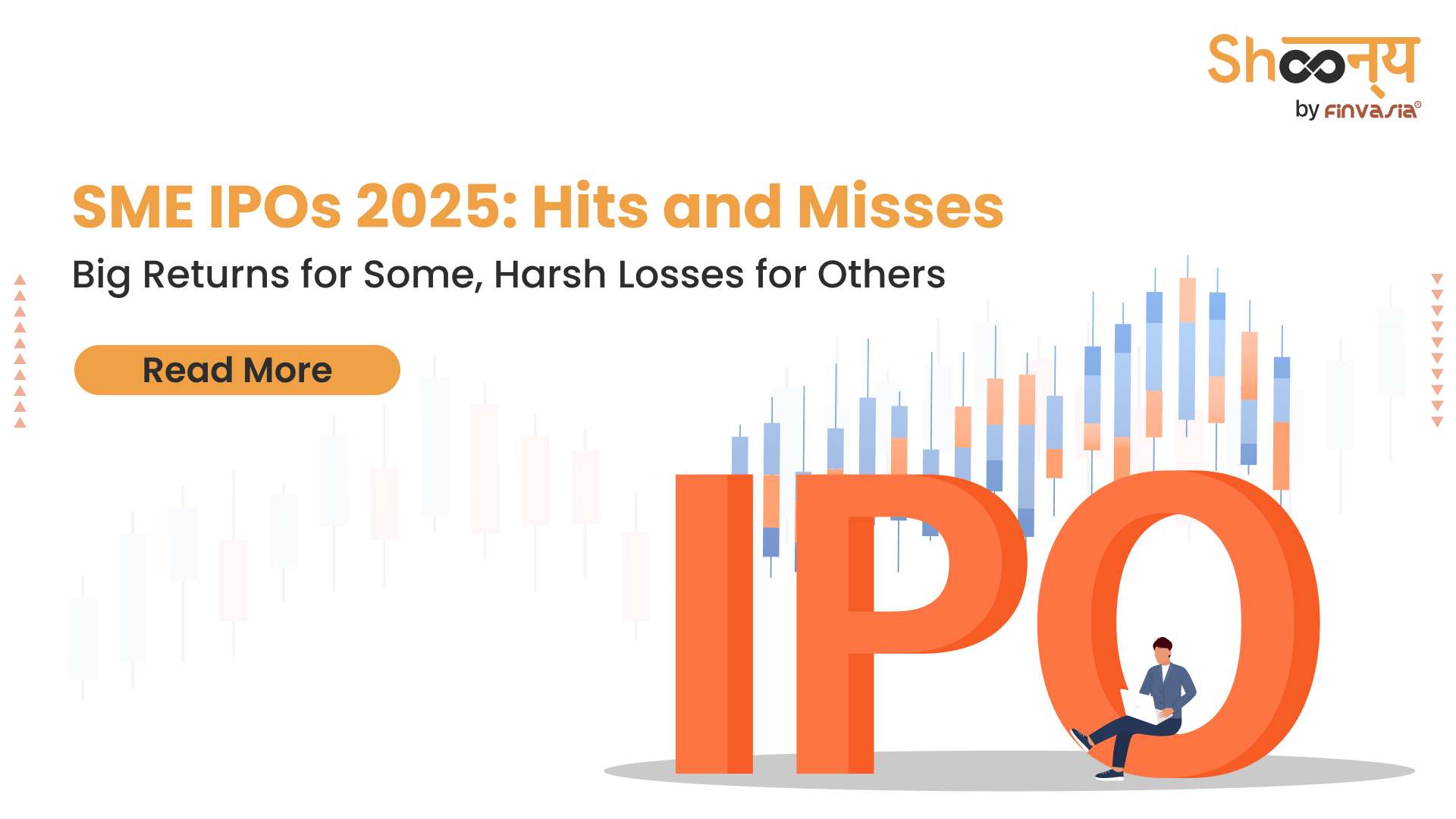SME IPOs in 2025: Winners, Losers, and Lessons Learned

As of 2025, several SMEs have already filed for IPOs in India. From dazzling success stories to deep disappointments, the year has kept investors on edge so far. Small and medium enterprises (SMEs) have been at the centre of attention for retail investors, institutional funds, and market analysts, cementing their place as a key segment in India’s capital markets.
This year, SME IPO activity has touched new heights, with over 180 companies debuting on the BSE SME and NSE Emerge platforms – a steep 45% jump from 2024. It’s a clear sign of growing confidence among small and medium businesses looking to tap into public capital. In total, these IPOs raised over ₹8,500 crore, underscoring the strong appetite for growth capital. It also reflects the maturity of India’s SME ecosystem and the willingness of retail investors to invest in emerging companies.
Many SME IPOs have generated impressive wealth for early investors, particularly those in the technology, healthcare, and niche manufacturing sectors. Tech-driven SMEs were among the biggest winners this year. Software firms, fintech startups, and digital services companies saw their stock prices multiply within months. Their scalable business models and future-ready offerings made them investor favourites. Healthcare IPOs, too, performed exceptionally well. Companies making speciality drugs, medical devices, or diagnostic services benefited from the continued focus on strengthening India’s healthcare infrastructure post-pandemic. Family-run manufacturing businesses with unique products or dominant market positions also impressed investors. Many of these companies smoothly transitioned to public ownership while retaining their competitive edge.
But the year wasn’t all positive. Some SME IPOs failed to live up to the hype, leaving investors disappointed. Many companies were listed at aggressive valuations that they couldn’t justify. Without strong fundamentals, their share prices fell sharply after listing. For some, the problem lay in executing their growth plans. Scaling operations, meeting compliance standards, and delivering projected growth turned out to be tougher than expected. Adding to the challenges was market volatility, which triggered wild swings in share prices that were often disconnected from company performance, making it difficult for investors to gauge actual value.
This year has truly been a tale of two extremes. The top 25% of SME IPOs delivered average returns exceeding 180%, while the bottom quartile saw losses averaging 35%. Technology and healthcare led the pack, clocking average returns of 95% and 78%, respectively. Manufacturing companies delivered mixed results, while traditional service businesses generally underperformed. Interestingly, issue size played a role in performance. IPOs that raised between ₹50 crore and ₹100 crore typically outperformed smaller ones, suggesting that scale continues to influence investor confidence and company growth post-listing.
Given the highs and lows in this space, a thoughtful approach is crucial. Investors need to delve deeply into the fundamentals, studying business models, management quality, and financial health closely, and look for companies with sustainable advantages and clear paths to profitability. It also helps to diversify investments across various sectors and companies to manage risk while capturing potential upside. Many SME IPOs deliver the best returns over longer horizons, making patience and conviction more rewarding than chasing quick gains.
SEBI has continued tightening disclosure norms and corporate governance standards to protect investors and boost confidence in SME IPOs. Government schemes that support SMEs with access to funding, tax incentives, and simplified compliance have also made it easier for companies to consider public listing as a viable growth strategy.
As 2025 progresses, the SME IPO market is showing signs of maturing. Investors are becoming more discerning, companies are focusing on stronger fundamentals, and the ecosystem itself is evolving toward better transparency and efficiency. The year has shown that while SME IPOs carry higher risks than large-cap offerings, they also offer unmatched potential for returns, provided investors conduct thorough research and maintain realistic expectations.
In 2025, SME IPOs have delivered both bright successes and sobering failures. The success stories have created tremendous wealth and highlighted the potential of India’s small and medium enterprises. At the same time, the disappointments have reminded everyone of the risks involved. Ultimately, SME IPOs will continue to play a crucial role in India’s economic growth story, offering investors opportunities and helping businesses access the capital needed to expand their operations. For those willing to embrace the journey with diligence and patience, the SME segment remains an avenue brimming with possibilities.
Source: MoneyControl
______________________________________________________________________________________
Disclaimer: Investments in the securities market are subject to market risks; read all the related documents carefully before investing.








